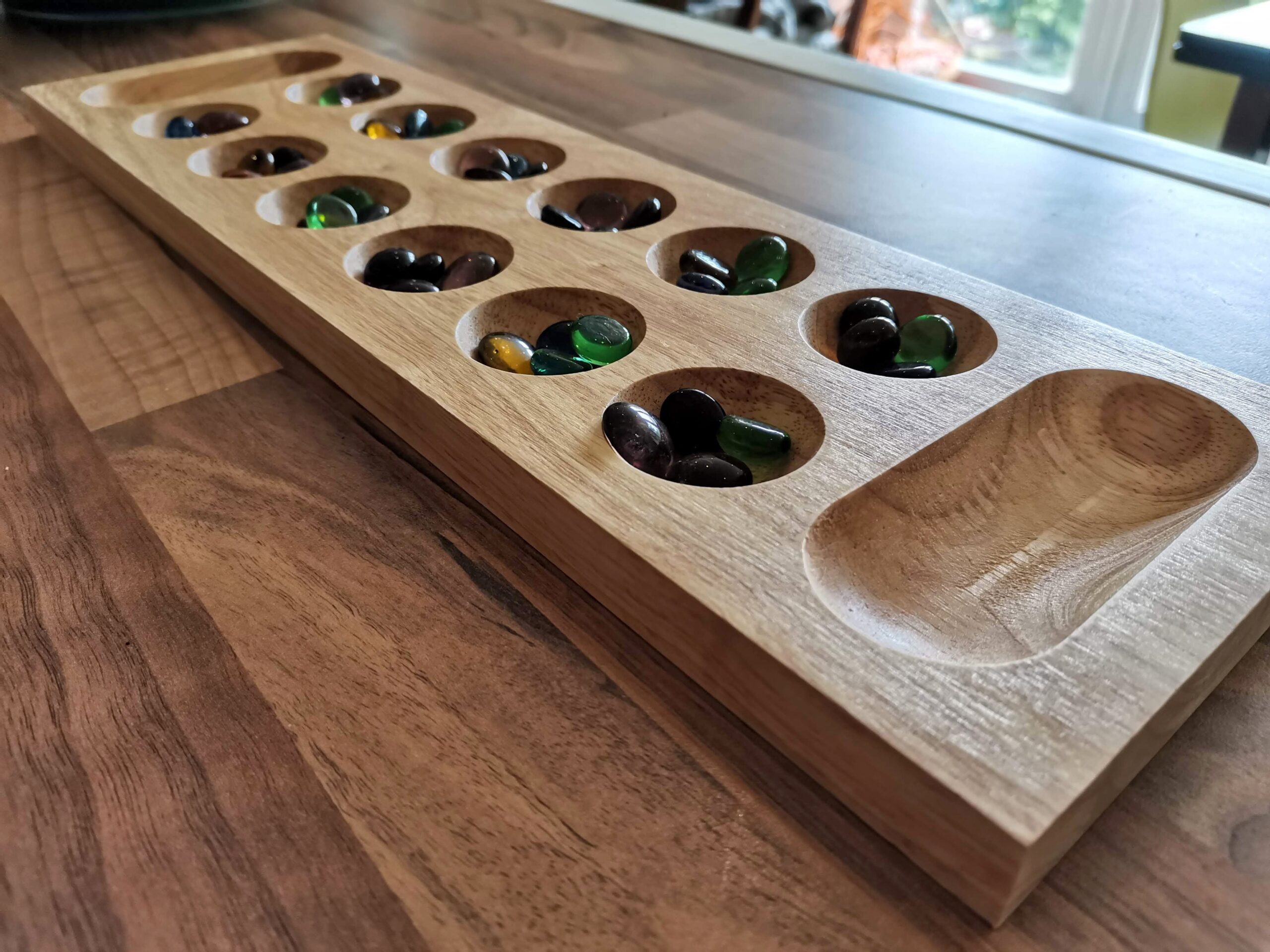Malum Hortus Preview

Disclaimer: All photos are from a pre-production prototype and do not represent the final game components, artwork, or rules.
Malum Hortus is a cooperative game where you play nymphs, lured to a beautiful garden to frolic, or do whatever it is when nymphs have a few hours to kill. Some weeding, maybe? Things turn sour at night though. What seemed like a nice garden full of sweet perfumes and bright colours turns out to be an evil place, and after dark the plants are out to get you. Your goal is to get all of the nymphs out of the garden and to get the trapped woodland critters out with you ideally.
I bet you’re wondering how that happens.
Tiptoe through the tulips
Malum Hortus is a card-driven game. Each of the nymphs starts in the middle of the board on one of four paths that lead to the edge of the board. Each player gets to play a card during each round, with each round representing a day. Cards do all sorts of things, from moving the naughty plants away from you, to adding more magic tokens to the shared magic pool.

It’s a co-op game, so yes, of course things like magic are shared. So too are things like the power to move nymphs along the path. You don’t have to move your own character, you can move the others too. Magic is used to do a couple of things, namely freeing critters if you share the same space on the board with them, and also using your nymph’s unique power. After you’ve all taken an action and flounced along the garden paths (in my mind, flouncing is the way nymphs move), night descends on the garden and the plants take their turns.

The plants on the paths are bad, bad plants. Frightfully naughty plants. Think ‘Little Shop of Horrors meets The Triffids’. Each plant has a dice rolled for its movement, and should it move past or land on the same space as you, you take some damage. Poor nymphs! By this point you’ve got the idea, I think. Move nymphs, gain magic, free critters, and avoid horticultural entanglements.
From tiny acorns
Malum Hortus is a lightweight game, and the theme of fairies in the garden really helps it lean into its strengths. It’s a game I think will work great for families with young children. The theme is so light and friendly that even when something bad happens to the players, it’s never vicious. Take dying, for example. It doesn’t happen. The rulebook (which is subject to change) says:
“If a player reaches 0 health, you do not die, Malum Hortus is crueller than that, you must endure.”
It sounds harsh, but what it means in practical terms is that you don’t need to tell a child their nymph died. It wasn’t torn to shreds by some thorny mutant plant. It goes back to the middle of the board and you collectively gain a corruption token. If someone hits 0 HP and you’ve got the token, you all lose. So it’s not a game of “I’m alright Jack, I don’t fancy your chances though”. You win or lose together.
There aren’t too many games being released which fall into the intersection of the ‘co-op’ and ‘lightweight’ Venn diagram. For that reason, Malum Hortus is a great stepping stone towards other, more complicated cooperative games like Pandemic or Gloomhaven, as it starts to get players to look at the bigger picture, and to understand that they need to work towards the greater good.

Final thoughts
I’m conscious of the fact that I’ve stressed that Malum Hortus is on the lighter end of the complexity scale, but I don’t want that to take away from the fact that it’s a good game. It’s just not the game you’re looking for if you’re after something heavy with layer upon layer of complexity. Instead, you’ll play cards, move characters along paths, and do your best to outrun the ever-dwindling Night deck, which acts as a combination of event cards and game timer.

Designer Nikita’s previous game, Canine Capers (preview here) showed that lightweight, family-friendly games are still as important as ever. Malum Hortus feels like an evolution of those design principles, keeping things simple and familiar (the plants use roll-and-move), while simultaneously introducing concepts which are commonplace to nerds like me (hand management and co-op planning).
I really hope the final game expands on the lore and setting of the game, because the descriptive text on the night cards is well-written and atmospheric, and it makes me want to know more about the garden and its inhabitants and prisoners.
The actions are really easy to understand, thanks to the game’s iconography. Hopefully in the full game (I was playing an early prototype) there’ll be some changes to the rune card artwork, because even as someone with reasonable eyesight, some of the runes aren’t very legible. But hey, that’s all a part of working with a prototype, and a good reason why you should always take a preview with a pinch of salt, because things can and will change.
We had fun with Malum Hortus, and I think your family will too, especially if you’re trying to introduce them to modern games.
If you’d like to know more, you can head over to the Malum Hortus Kickstarter page and sign-up to be notified when it goes live.

Malum Hortus (2024)
Design: Nikita Sullivan
Publisher: Atikin Games
Art: Nikita Sullivan
Players: 1-4
Playing time: 30-60 mins













